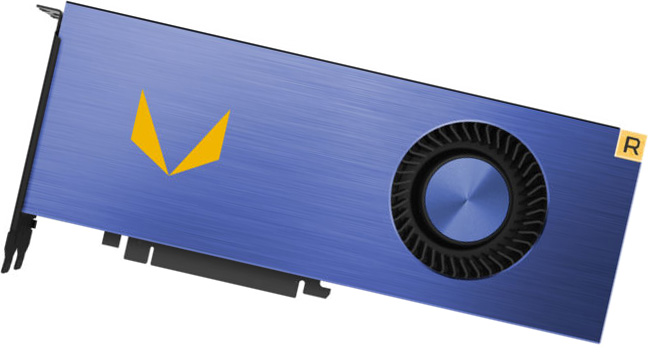Radeon RX Vega cards for gamers will be faster than the Frontier Edition
Coming soon.

AMD finally unveiled its first Vega graphics card, but much to the chagrin of gamers, it turned out to be a professional part for data scientists and the like. Drats! The good news, however, is that Vega presumably will be launching to consumers soon, and some of those cards will be faster than the Frontier Edition.
In a Reddit AMA, AMD's Radeon boss Raja Koduri said he wasn't able to divulge a specific launch date or pricing information, but did want to address some of the "rumors and innuendo" floating around. One of those pertained to performance.
When asked if consumer variants of Vega would be as fast as the Frontier Edition, Koduri did not dodge the question or offer a canned response. Instead, he said that "consumer RX will be much better optimized for all the top gaming titles, and flavors of RX Vega will actually be faster than Frontier version!"
As a refresher, the Frontier Edition boasts 64 compute units, which works out to 4,096 stream processors, the same as AMD's Radeon Fury X. It also has 16GB of HMB2 memory on a 2,048-bit bus, clocked at around 1,865MHz for 480GB/s of memory bandwidth.
AMD is claiming that its Frontier Edition card can deliver 25 teraflops (TFLOPS) of half-precision FP15 compute performance and 13 TFLOPS of single-precision FP32 compute performance. Based on the 13 TFLOPS figure, that would give some Vega cards a clockspeed in the range of 1550-1600MHz.
As a point of comparison, Nvidia's Titan Xp delivers 12 TFLOPS of FP32 compute power. It's not all TFLOPS, as Nvidia has traditionally delivered more gaming performance per theoretical TFLOPS (eg, 1070 is 7.3 TFLOPS compared to 8.6 TFLOPS on Fury X), but with 50 percent more compute compared to Fury X, Vega is shaping up to be very competitive. AMD also showed how their High-Bandwidth Cache Controller (HBCC) improved performance, with Rise of the Tomb Raider running 35 percent faster with HBCC on vs. HBCC off.
We don't officially know how many Vega SKUs there will be for consumers but the current rumor is three: Nova, Eclipse, and Core. Those same rumors put the Nova as superior to the Frontier Edition, the Eclipse as slightly inferior, and the Core likely as a compact Nano replacement. While Koduri says that multiple flavors of consumer Vega cards will be faster than the Frontier Edition, but that doesn't necessarily mean they will have beefier specs. It's important to remember that professional cards are optimized for a different set of tasks than gaming cards.
Keep up to date with the most important stories and the best deals, as picked by the PC Gamer team.
This bodes well for Vega. The Frontier Edition was shown pushing 60 to 70 frames per second in Sniper Elite 4 at 4K resolution. On the consumer side, AMD is setting the expectation that Vega will capable of 4K gameplay across the board.
"[The] primary vision with Vega was to establish our next generation architecture that is capable of dealing with large data-sets (tera, peta, exa, etc.) From a gaming perspective we wanted to build a product that tackles the challenging 4K@60Hz for AAA gaming... Like Fiji Vega will excel in small form factors etc due to HBM2 advantages," Koduri added.
So there you have it, more steam for the hype train as it races down the tracks. As to when it will reach its destination, Koduri said it will be showing off consumer Vega cards at Computex at the end of the month, "but it won't be on the stores that week." That basically amounts to a soft launch. While not stated, we suspect retail availability to follow starting sometime later in June.
Paul has been playing PC games and raking his knuckles on computer hardware since the Commodore 64. He does not have any tattoos, but thinks it would be cool to get one that reads LOAD"*",8,1. In his off time, he rides motorcycles and wrestles alligators (only one of those is true).


